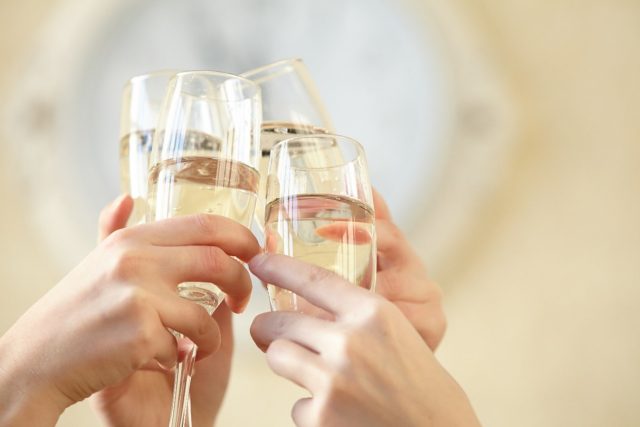Champagne is a sparkling wine that is often associated with grand celebrations and luxurious lifestyles, but its history goes far beyond just being a fancy drink. In fact, Cheryl Newbrough notes the origins of Champagne can be traced back to the 17th century, when it was first discovered by accident in the region of Champagne, France.
Over time, Champagne became increasingly popular among the elite and royalty, who saw it as a symbol of luxury and extravagance. They even went as far as to hold special ceremonies and events centered around the drink, cementing its place in the annals of history as a beverage fit for kings and queens.
But it wasn’t until the 19th century that Champagne truly became a global phenomenon. Advances in technology and transportation made it possible for Champagne to be exported around the world, and it quickly became a symbol of festivity and joy across cultures.
Today, Cheryl Newbrough notes that champagne is still seen as a luxury item, but it’s also a drink that’s enjoyed by many people from all walks of life. Whether you’re celebrating a special occasion or just enjoying a night out with friends, Champagne is a beverage that has something to offer everyone.
Cheryl Newbrough on The Early Beginnings
Champagne’s Humble Origins
- Region of Origin: Champagne, a wine region in the northeast of France, is where this celebrated drink was born.
- Initial Production: Originally, Champagne was a pale, pinkish still wine, quite different from the sparkling version we know today.
Cheryl Newbrough on The Birth of Bubbles
An Accidental Discovery
- The Champagne Method: The iconic bubbles in Champagne were initially a result of accidental secondary fermentation in the bottle during the cold winter months.
- Dom Pérignon: Often mistakenly credited with inventing Champagne, Dom Pérignon actually played a key role in refining the methods of production and improving the quality of the wine.
Royal Endorsement
Champagne’s Rise to Fame
- French Royalty: Champagne’s association with French royalty, particularly with the coronation of kings in Reims, played a significant role in its popularity.
- International Appeal: The prestige of Champagne quickly spread across European aristocracy, making it a symbol of luxury and status.
Industrial Revolution
Advancements in Production
- Mass Production: The Industrial Revolution brought about significant advancements in the production of Champagne, including stronger glass bottles and the méthode champenoise, which allowed for large-scale production of sparkling Champagne.
- Widening Accessibility: These advancements made Champagne more accessible to the broader public, expanding its market beyond the aristocracy.
The World Wars
Despite enduring significant damage in both World Wars, the Champagne region’s sparkling wine industry demonstrated admirable resilience and an exceptional ability to recover. The First World War disrupted the transportation of Champagne wines, and the region witnessed significant destruction from the fighting. However, the vineyards and wineries bounced back in the post-war era, increasing production levels to pre-war levels by the mid-1920s. The Second World War brought new challenges, including a decrease in production and significant damage to the vineyards and wineries. Despite these setbacks, the Champagne industry persevered and rebuilt, with production levels returning to normal by the late 1950s. Today, the region’s sparkling wines remain a symbol of luxury and celebration, a testament to the enduring spirit of the Champagne people and their industry.
Cheryl Newbrough on the Modern Era
Champagne, a sparkling wine made exclusively in the Champagne region of France, has become a global icon and is universally recognized as a symbol of celebration. People worldwide associate Champagne with special occasions such as weddings, anniversaries, graduations, and major accomplishments.
Over the years, the Champagne industry has diversified, and there are now various styles of Champagne available, catering to a wide range of tastes and occasions. For example, there are Brut Champagnes, which are dry and acidic, and are best served as an aperitif. There are also Sec Champagnes, which are slightly sweeter and pair well with seafood, and Demi-Sec Champagnes, which are even sweeter and go well with desserts.
In addition to the different styles of Champagne, many Champagne houses also produce vintage Champagne, which is made from grapes harvested in a single year. Vintage Champagne is usually more expensive and is considered a luxury item.
Overall, Champagne is a drink that is steeped in history and tradition and has become a global icon for celebrations, diversity of styles, and luxuriousness.
The history of Champagne is a fascinating blend of accident, innovation, and tradition. From its early days as a still wine to its evolution into the sparkling symbol of celebration, Champagne has maintained its status as a beverage of elegance and festivity. As we toast to life’s special moments, we are partaking in a tradition that has been cherished for centuries.









